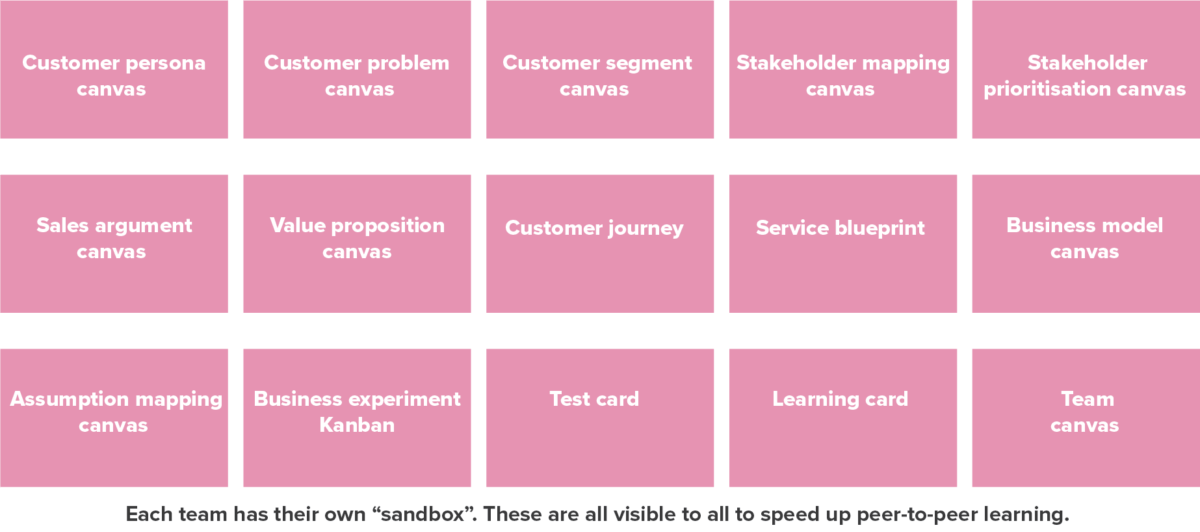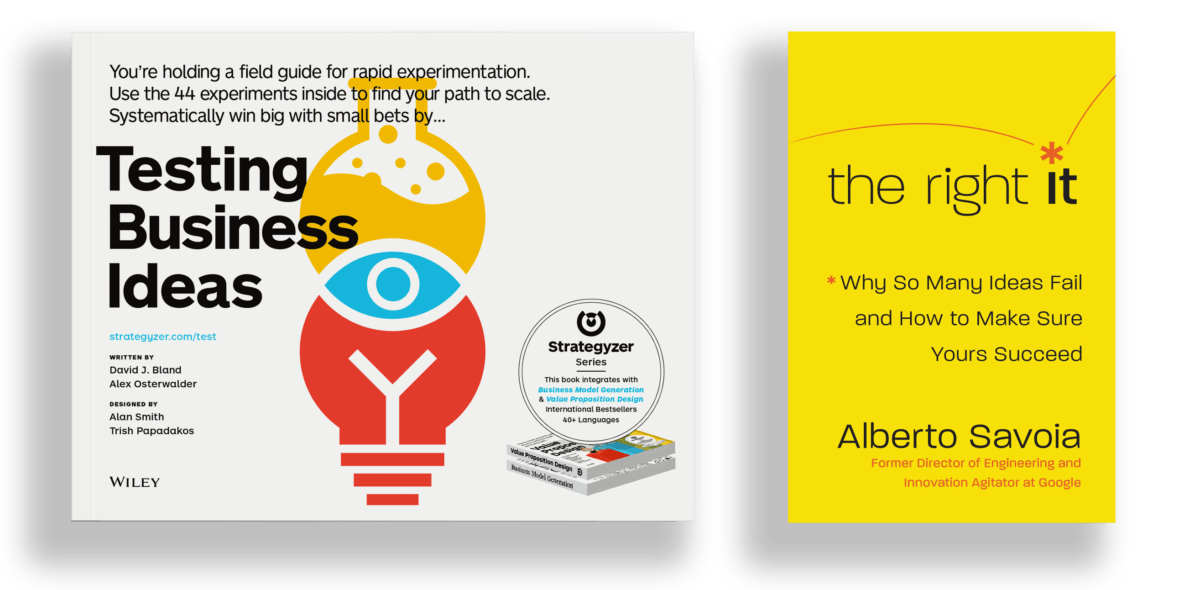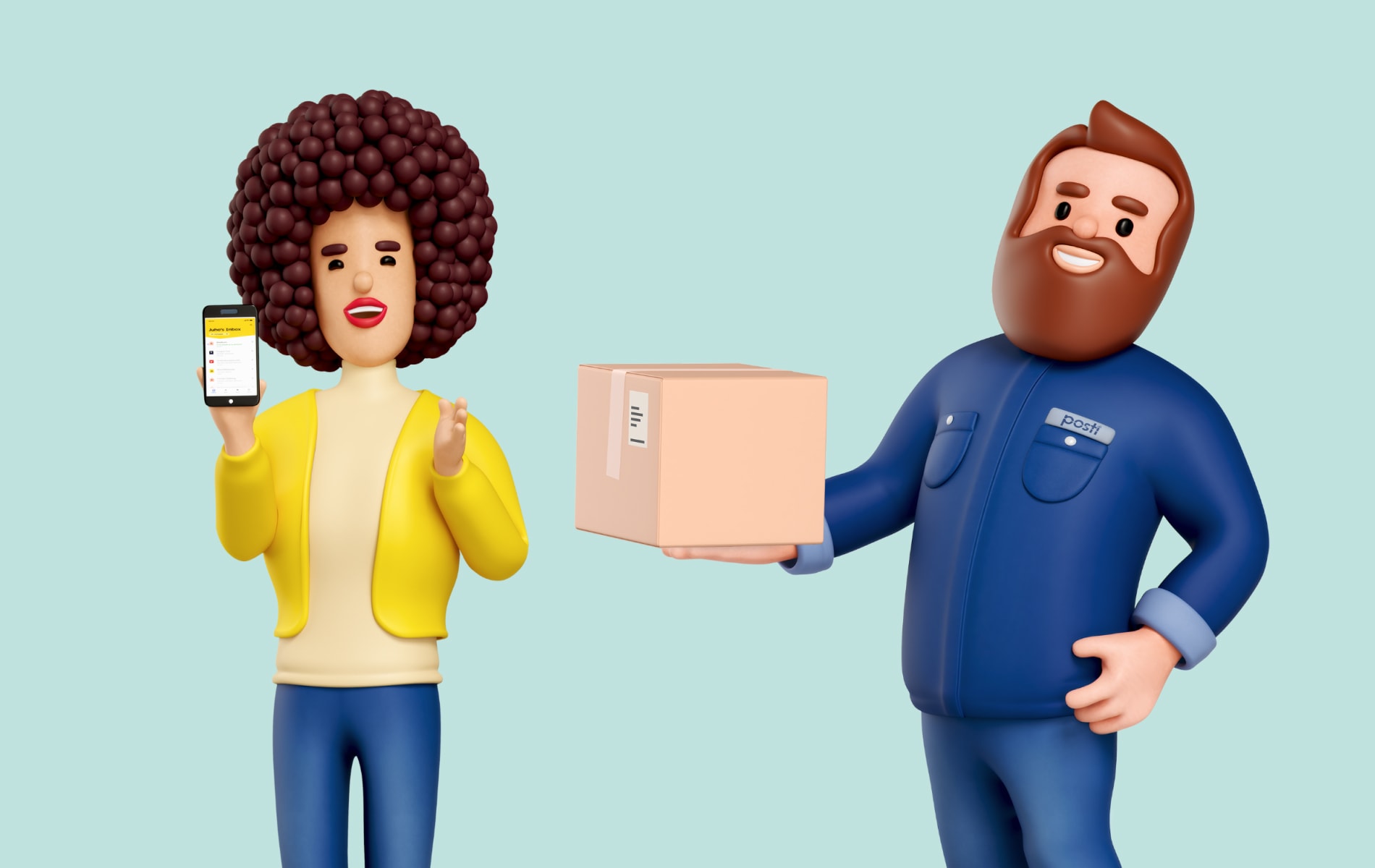Posti oraganizes an “open innovation” innovation bootcamp, X-celerator, to enable cross-collaboration, validate business ideas and speed up learning. This year the progress of validating ideas and skill-building has been remarkable.
I will now share the process, tools and frameworks we have been using in the last weeks in helping teams to collaborate and scale their ideas. Please note that these tools are to support the ideation – in the end it is all about the mindset.
The Process
The bootcamp is an intensive 12 week period where teams work on scaling their ideas further. In the first week we started by understanding who the customer is and what the problem is we are aiming to solve. This is a part of what we call customer-problem fit testing. In the later week we continued with the problem-solution fit and product-market fit testing.
This year the X-celerator is in a virtual mode and we use Miro, an online whiteboard tool, as the backbone to share and work on materials. In Miro each team has its own “sandbox” to play in.
As mentioned earlier one of the objectives for Posti is to speed up the learning and thus we have all material visible to all participants all the time. This enables peer-to-peer learning and has increased collaboration between the teams. It is valuable not to hide the value treasures, the findings from each other during the journey.

The Tools and Frameworks
We are utilising many frameworks and tools to guide our thinking and visualise the challenges. e.g. Job-To-Be-Done, XYZ hypothesis, Value proposition canvas, Customer problem canvas, Customer persona canvas, Stakeholder mapping canvas, Business model canvas and Assumption mapping canvas.
Canvases are great in telling and visualising the story in short. To reap the benefits of getting everyone in the same page it is important to fill up the canvases together with the team. This increases shared understanding and ownership and is the means to reach more systematic business development.
All canvases are accessible the whole time. So even-though some teams did not have time to fill canvases in detail during the coaching sessions – they were still able to come back to them to enrich the canvases based on their experiments.
The Business Experiments
As Miro is a backbone to run the trainings, the mindset and guiding structures comes from two books. Testing Business Ideas by Alex Osterwalder & David Bland and The Right It by Alberto Savoia.

The purpose of the experimentation is to mitigate risks in the early phase of the business development. To ensure that the service is worth building and to get evidence that there is someone interested in the service and she/he would actually want to use it and pay for it.
Each team has done several experiments to learn more about the potential desirability of their service. These experiments include e.g. Stakeholder and customer interviews, Product brochures, Prototypes, Social media campaigns, Landing pages, Questionnaires, Data gathering, Number crunching and Calculating Total available Marketshare ( TAM ) and Serviceable Obtainable Marketshare (SOM).
Towards the Grand Finale
We are getting closer to the Grand finale, the pitching event where judges will choose which team or teams will get funding to scale their idea even further.
The 6 criteria to evaluate the 3 min pitches are: the customer problem, the solution to customer problem, market potential, potential to Posti, what the team is planning to do next and what resources and funding they need to get there.


